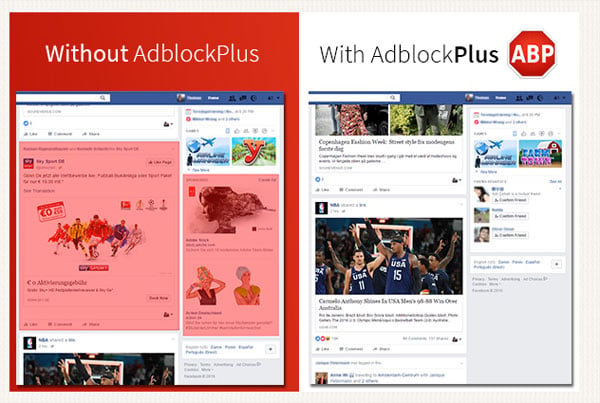The Current Situation with Ad Blocking on Social Media

Any business that relies on advertising for revenue has to be concerned about the unprecedented rise of ad blockers, which can identify and remove certain content (e.g., display ads, banner ads) from a person's digital experience.
It's consumers' answer to an industry that has for too long annoyed them, spoke to them generically, interrupted them and, in some cases, tricked them.
For quick reference and to get up to speed, consider the following stats from the "2016 Mobile Adblocking" report from PageFair.
- At least 419 million people (22 percent of the world's 1.9 billion smartphone users) are blocking ads on the mobile Web.
- Both mobile Web and in-app ads can now be blocked.
- As of March 2016 an estimated 408 million people are actively using mobile ad-blocking browsers (e.g., a mobile browser that blocks ads by default).
- As of March 2016 in Europe and North America there were 14 million monthly active users of mobile ad-blocking browsers.
- A further 4.9 million content blocking and in-app ad-blocking apps were downloaded from the app stores in Europe and North America since September 2014.
These staggering numbers are bad news for both publishers (e.g., traditional news agencies, bloggers and even social networks like Facebook) and advertisers alike. When it comes to Facebook, in particular, it's obviously advertising driven and its algorithms continue to limit organic reach (how many people see a company's post without them paying to boost it) for Pages, in the name of quality control, of course.
Some reports expect organic reach to hit zero in the near future, which many people who are responsible for the daily management of this channel likely aren't surprised by. This diminishing rate of organic reach has encouraged many brands to begin advertising on Facebook as well as Twitter, Instagram, Pinterest and LinkedIn. With ad blocking becoming so prevalent, however, advertisers are rightfully questioning where and how they should promote their products or services. Here is what we know about ad blocking on social right now:
Facebook Is Fighting Ad Blocking
Both advertisers and the social networks themselves are watching to see how Facebook handles ad blocking. Recently, Facebook announced two new features highlighting its strategy. For one, Facebook is giving users more control over the ads they see. The ad preferences center is easier to use and is where users can remove interests from their ad preferences so they are not, for instance, shown ads about software if that's not an interest they have. Users can also stop seeing ads from businesses or organizations who have added them to their customer list.
While these are more manual ad-blocking controls, Facebook is also taking on the ad-blocking technologies themselves by creating unblockable ads stating, "We'll also begin showing ads on Facebook desktop for people who currently use ad blocking software."
Popular ad blocking company Adblock Plus retaliated by enlisting its open-source community to find a solution to beat, which it did - quickly. ADP admittedly says it has won this round with Facebook, but knows the "cat and mouse game" is far from over.

"Facebook might 're-circumvent' at any time. [...] this sort of back-and-forth battle between the open source ad-blocking community and circumventers has been going on since ad blocking was invented; so it's very possible that Facebook will write some code that will render the filter useless - at any time. If that happens, the ad-blocking community will likely find another workaround, then Facebook might circumvent again, etc."
What to Do
Caught in between this cat and mouse game are brands trying to acquire and retain customers. They should know that (1) the organic reach boosting tactics they used in the past (like including images, using the right hashtags, posting at the ideal time, etc.) will still work, but to much less effect as algorithms reduce their reach regardless of what they do and (2) that their advertisements will be impacted by the use of ad blockers as networks fight the technology, find solutions and then have to fight them again. Even so, however, good content still stands to be shared and talked about.
Here are some quick hits about how to improve social reach, organically:
- Include social sharing options on content pages. When users share content, they are not impacted by algorithms in the same way.
- Encourage more user-generated content (e.g., unboxing videos, reviews, etc.).
Read more.
- Consider starting an employee advocacy program, as people are more likely to read and engage with content from their peers. Read more.
- Leverage influencer marketing where influencers post content on the brand's behalf (make sure to be compliant with FTC rules). Read more.
- Create great content that identifies and solves painpoints. Read more.
- Start a referral program that rewards users for social sharing.
- Include social sharing options and handles within emails.

Subscribe to Our Newsletter!
Latest in Social Media










